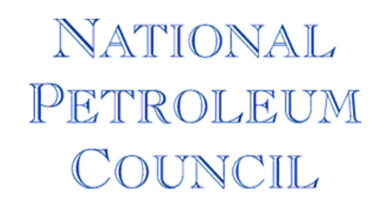New contracting models needed to finance decarbonization programs, drive new solutions
Contractual incentives for fuel savings, earlier collaboration between operator/contractor, and long-term contracts among potential strategies

By Jessica Whiteside, Contributor
While there is agreement within the drilling industry that emissions reductions must be prioritized, there is no consensus on who should pay for the technologies and tactics required to achieve those reductions. “We have a responsibility to have an open debate about how we go forward,” Darren Sutherland, Vice President – Europe & Africa at Borr Drilling, said at the 2023 IADC World Drilling Conference in London. Mr Sutherland was among several participants on a panel session focused on how the upstream industry should finance its decarbonization efforts.
He noted that drilling contractors face distinct challenges in accessing the resources needed to finance decarbonization initiatives, such as more limited bank lending options and higher debt costs for bond issues. “We don’t have easy access to money. We’re going to have to earn it and use our own cash if we need to.”
There’s also a stark contrast in financial backdrop between the operator and offshore drilling contractor sides of the business. For operators: relatively consistent dividend payouts, share buybacks and debt reduction. For drillers: no dividends for several years, few share buybacks except as part of a transaction, and operating cash flow that has gone consistently downhill the past few years, at times dropping below CAPEX.
At the same time, they’re also still dealing with “discount” trends on dayrates. “That’s the trend even now as the markets are on the way up. There’s a continual pressure: reduce your costs, reduce your costs. And it can’t continue because it’s not sustainable,” Mr Sutherland said.
It can also be challenging for drillers to justify investing in emissions reduction when the benefits go to the operator, said Darrel Pelley, Managing Director Technical Marketing at Transocean. For example, cost savings achieved when reducing fuel use on the rig typically accrues to the operator, not the contractor. “Typically fuels are furnished by our customers. As a result, every drop that we save, the fuel savings flow straight back to them,” he said. “They control the well design. They set the order of activities. In some cases, they even dictate the way our power plant is configured, which further limits our ability to optimize power plants and maximize our fuel efficiency.”
Sustainable contract models
To combat some of these challenges, Mr Sutherland called for the industry to adopt more sustainable contracting strategies. Such strategies would give drillers “contracts that we can hang our hat on,” which can be taken to the bank for financing, or can help give confidence to shareholders and banks that investments in newbuilds or equipment upgrades will generate returns.
“It’s really important that we have a look at the contracting model in the context of anything to do with decarbonization performance and efficiencies in our business,” he said.
Under traditional dayrate arrangements, finding ways to cut days off the well – which reduces emissions by requiring less diesel to be burned – can mean savings for the operator. For the contractor, however, that translates to a reduction in forecasted revenue, Mr Sutherland said. “How do we get that balance back whereby if I’m saving you a significant amount of money, I get a significant amount of money back?”
Rather than slipping into the age-old discussion of how big the bonus should be, the industry has to step back and look at contracts differently, urged Ian Ferguson, General Manager Wells Operations – UK & Norway at Shell. To incentivize pursuit of higher-cost decarbonization options, contractors and operators will need to figure out arrangements that are mutually beneficial. He added that there’s “probably a discussion to be had on longer-term deals” that enable design and equipment spec choices that consider decarbonization efforts into account.
“Maybe in that new base contract we’re saying, ‘Actually, it should also include greenhouse gas emissions and efficiency.’ And there’s various ways you can get that,” Mr Ferguson said. “You get it by drilling a quicker well, by managing energy use, by choosing the fuel supply.”
Because the bulk of emissions from drilling operations comes from the burning of diesel fuel, decarbonization efforts have focused on initiatives such as rig electrification, alternative fuels, or fuel and energy efficiency approaches. Some operators are looking at incentive arrangements to share the benefits of fuel savings with contractors. Equinor, for one, has included fuel incentives in its rig contracts.
“It’s vital that drilling rigs perform efficiently and have as low a fuel consumption as possible,” said Ellen Hald, Manager, Lower Carbon Solutions in Drilling and Wells at Equinor. Existing solutions like engine management systems, exhaust heat recovery and hybrid solutions will not be sufficient to close the gap toward emissions goals, she said. “This emphasizes the need for both smart energy usage on our rigs and that we need new solutions in our toolbox,” she said. “Strong collaboration between operators and suppliers have been essential for development of our industry in the past and will be important for safe and sustainable energy transition going forward.”
Shell, too, has begun bolting incentivization for decarbonization performance onto its contracts while incorporating language around aligned values, including decarbonization, into its sustainability clauses, Mr Ferguson said. “We have made cleaner well operations one of our five key pillars for how we want to improve how we deliver our wells activities between 2020 and 2050.”
He pointed to Shell’s partnership with Diamond Offshore on an engine management system on the Ocean Endeavor semisubmersible as a “role model” for this sort of approach.
“What we’ve done is said, ‘Where we save diesel, we will pass that benefit on to you in the form of an incentive,’” Mr Ferguson said, describing this decision as “a natural thing to walk into once we understood it… Why not just make that the norm?”
For contractors, they see earlier involvement with their customers’ drilling programs as a cost-effective way to increase collaboration and, therefore, efficiency. For example, at what Mr Pelley called the tactical level, he noted that contractors can reduce fuel consumption during rig moves simply by adjusting the transit speed. “There’s a diminishing value once your engine load is getting up to 70-80%.”
At a more strategic level, the operator and contractor can also better collaborate to identify decarbonization technologies that give maximize value, with an understanding of the time and costs associated with first piloting and then deploying those technologies at scale, Mr Pelley said.
For some larger decarbonization projects where upgrade costs can run into the millions, contractors need significant terms on their contracts to pay that back. “We cannot invest unilaterally,” Mr Pelley said. “Commercially, operator participation is absolutely critical right now.” DC




